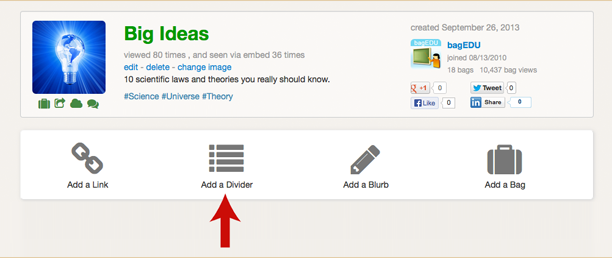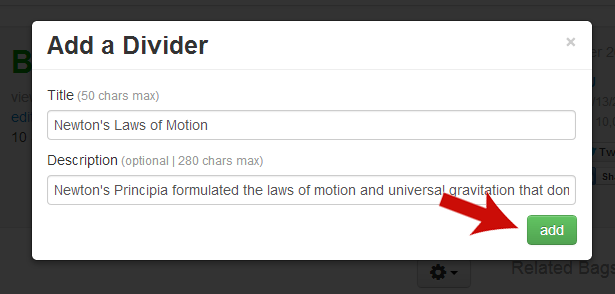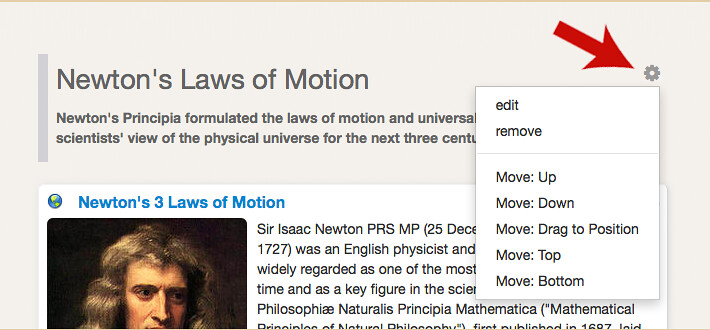Today we are super excited to announce a new feature called Dividers.
BagTheWeb is designed to help you find great content, place it into your topic bags and share those bags with communities of interested readers. Our tool makes it very easy to collect content from anywhere and share it everywhere. Active users recently asked us a question:
I found and collected awesome web content into my bags, is there a way to organize them flexibly?
Our answer comes with the dividers feature. By adding custom dividers to your bags, you can organize bagged web content into sections, steps, categories, weekly, groups, and so on.
Here is an simple guide of how to use it.
Step 1: Click the “Add Divider” button under the bag description box

Step 2: Type title and description for divider, click “Add” button

Step 3: See the result

Step 4: Edit or move divider

See the example bag:






